In the early 1950s, Karmann already had the Beetle cabriolet in production at its Osnabrück factory, but it had an uphill struggle to win over Volkswagen on the idea of a sportier model. Its initial drawings were rebuffed by VW, and it was only when the German coachbuilder brought in Italian styling house Ghia that the project got the go-ahead. In typically rational German fashion, the car became the Karmann Ghia and was sold through VW dealers around the world. These rational beginnings created one of the most beloved and admired classics of its generation.
Such affection is not because of performance or handling; the Karmann Ghia, or Type 14, in VW nomenclature, used the same 29bhp, 1,192cc flat-four as the standard Beetle. Better aerodynamics meant the sleek coupe could push to 77mph compared the Beetle’s 68mph. The Karmann was heavier, however, so acceleration was a little slower than the humble people’s car upon which it was based. None of that mattered to those who loved the Ghia’s styling, of course. And the cabriolet model that arrived in 1957 only added to the Karmann’s appeal, especially in the USA.

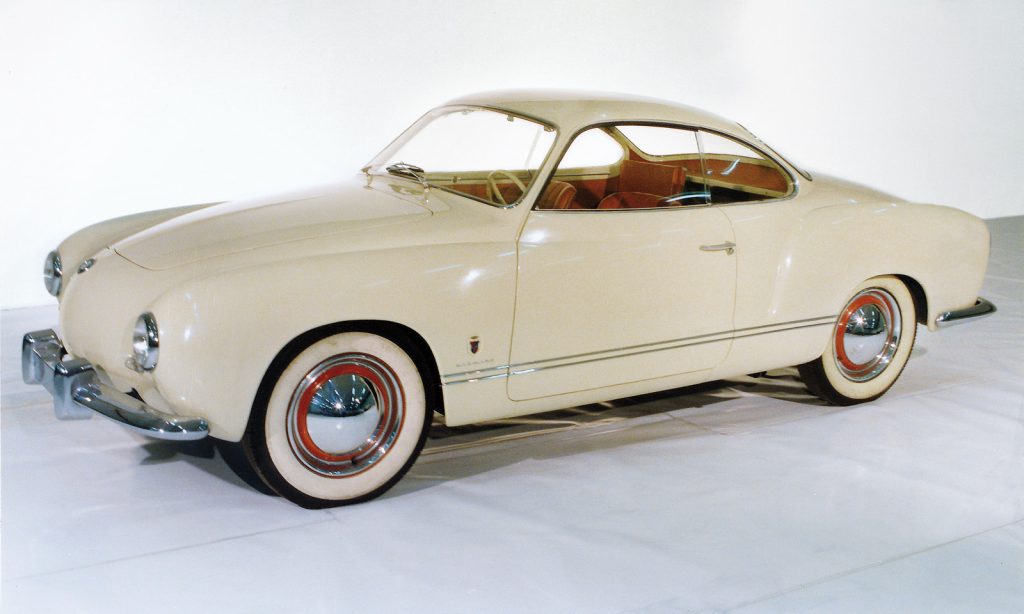
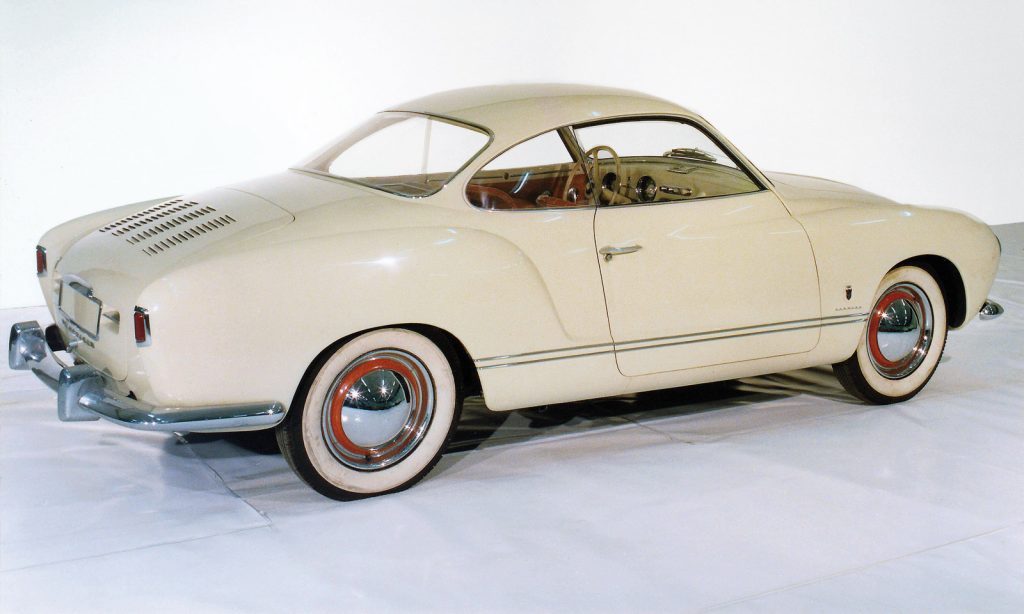
A small facelift in 1959 moved the headlights 50mm higher on the front wings, and this was followed by the option of a semi-automatic Saxomat gearbox in 1961, which was when larger rear lights were also added.
More power arrived in 1960 with a 40bhp 1,200cc motor, followed by the 1300 model in 1965. That year also saw a switch to ball joints in the front suspension to replace the previous kingpins for easier maintenance. For 1967, Volkswagen adapte the 1500 engine from the Beetle, along with front disc brakes and a revised rear suspension, 12-volt electrics, and wheels held on by four bolts in place of the previous five studs. VW finally swapped the swingarm rear suspension for an independent set-up in 1967, while a 50bhp 1,584cc flat-four engine was used from 1969 through to the end of production in 1974 in Europe, and 1975 in Mexico.
Alongside the swoopy original Karmann Ghia, a second model was added in 1961 in the shape the Type 34, also known as the Razor Edge for its looks. It was based on the Type 3 platform rather than that of the Beetle, with the aim of offering a sportier, more luxurious coupe. VW only built 16 cabriolets based on the Type 34, which are now prized collector items. The sharper looks of the Type 34 were matched by a 45bhp 1,500cc engine, then a 54bhp 1,600cc unit from 1966. However, this take on the Karmann Ghia only lasted to 1969 before it was discontinued after slow sales, which were hampered by the fact it was not offered in America.
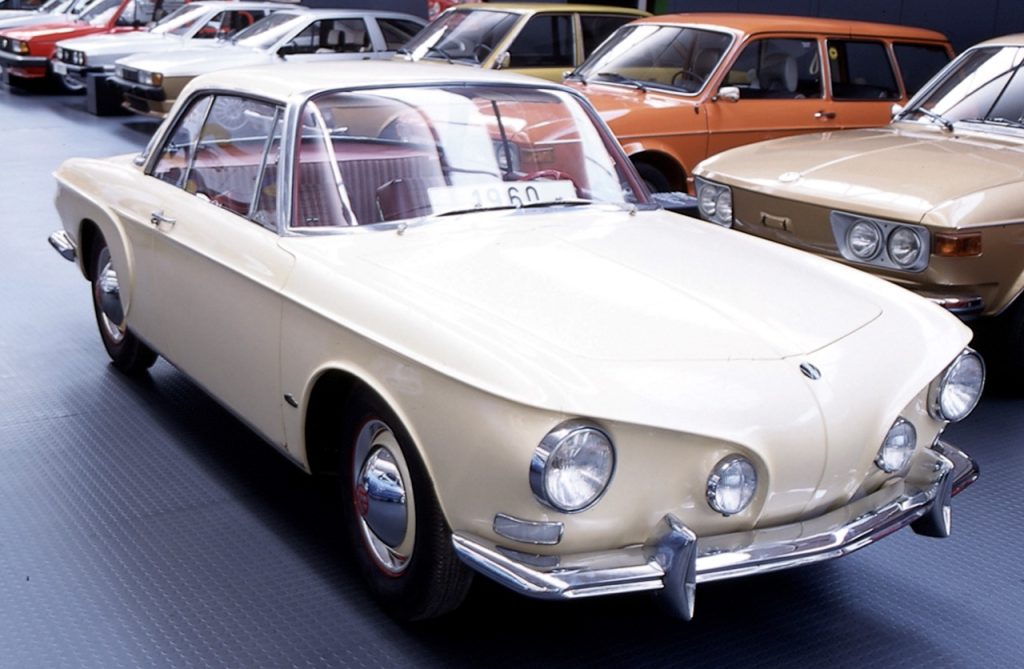
By the end of the Type 34’s life, 42,563 units had been built, a fraction of the 445,300 Type 14s constructed in coupe and cabriolet form. Today, the rarity of the Type 34 means some prefer it to its arguably prettier Type 14 sibling, while the Karmann Ghia cabriolet also enjoys a strong following. With plenty around and almost all parts available to keep a Karmann Ghia running and driving, it’s a popular, stylish, and eminently usable entrée to the world of classic cars.
What’s a Karmann Ghia like to drive?
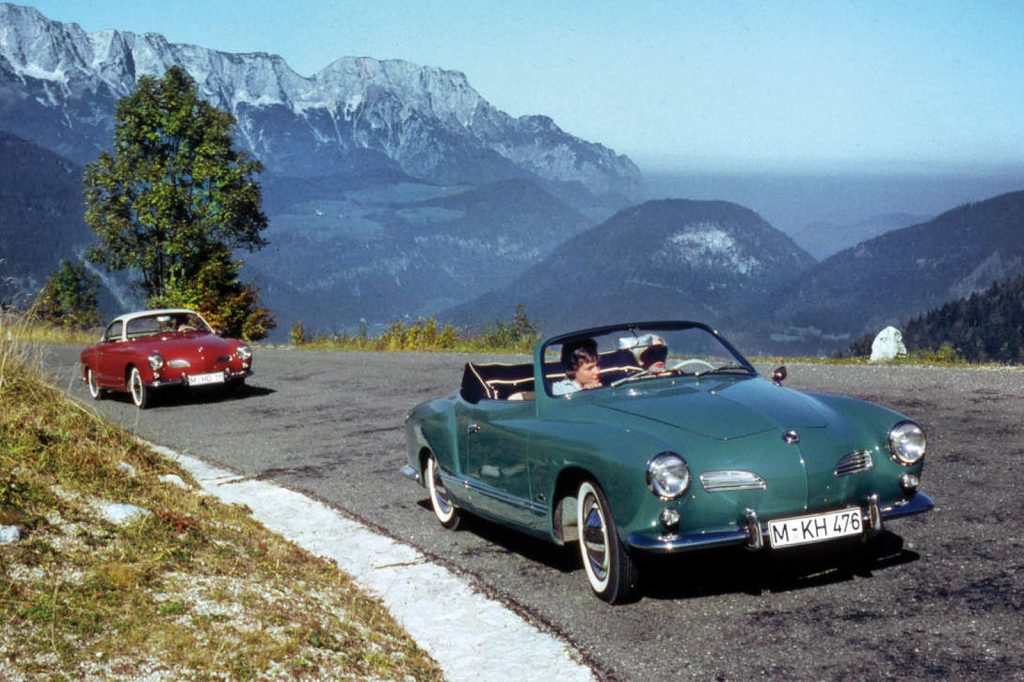
Anyone familiar with a Volkswagen Beetle will feel instantly at home in the Karmann Ghia. That’s no surprise when the two share their mechanical components. What you will notice in the Karmann are the pedals, which feel even more offset to the centre of the car in relation to the steering wheel. Drivers with larger feet might also find it pays to wear narrow shoes, as the pedals are quite closely spaced, but it’s something you soon get used to.
All-round vision is excellent in the fish bowl of the Karmann Ghia coupe’s interior, so parking and swapping lanes is easy. With the hood up, the cabriolet feels more intimate and limits vision over the driver’s shoulder, but it’s not a something to put you off. The rest of the cabin is simple and uncluttered, but forget using the back seats for anything other than storage as they are small and even young children will find it a squash back there.
The flat-four engine in any Karmann Ghia whirrs into action with the same mix of sewing machine and raspy noises as any other air-cooled Volkswagen. It should settle to an easy idle, and selecting first in the standard manual gearbox is easy with its usual H-pattern. The shift action can be a little vague, though this is usually improved by greasing or replacing the linkages. Cars from 1961-on came with an all-synchromesh gearbox, which makes life a little easier in slow-moving traffic. From there, the ’box moves from one ratio to the next happily and the engine offers just enough low-down shove to avoid constant gear swaps to deal with hills.
Do not for a moment, however, think the Karmann Ghia is a brisk car. Even the most powerful Type 34 version is sedate at going from rest to A-road cruising speeds. Don’t let it put you off, though, as the VW is not any worse than many of its contemporaries, and it does have the benefit of a quieter cabin; most of its mechanical noise is lost in the wind behind the car. Many Karmann Ghias, like their Beetle brethren, have had performance upgrades to their engines. These can add to the car’s turn of pace, but we’d argue the standard engines are fine, and it’s better to adjust your expectations than try to make the car fit a modern ideal.
Once moving, the suspension of the Karmann Ghia does a good job of cushioning you from ridges and ripples in the surface of the road. Cars with the revised rear suspension from 1967 enjoy a bit more composure and confidence as you drive through bends, but all Karmann Ghias are generally composed and offer steering that is direct without any kick back.
How much does a Karmann Ghia cost?
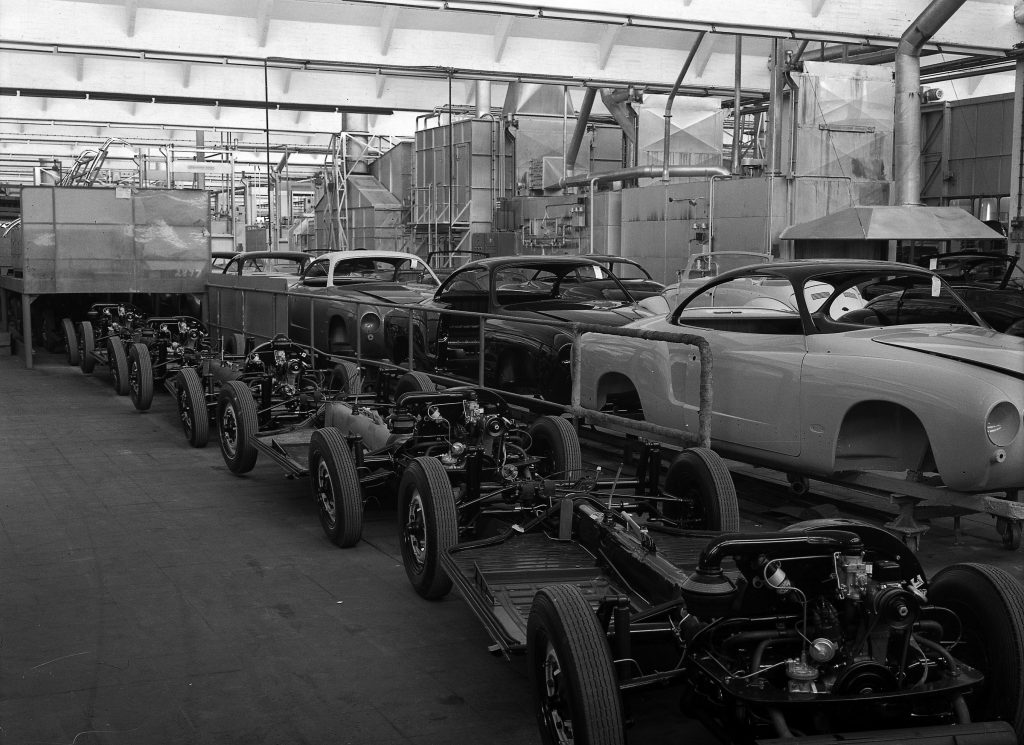
There are a lot of detail differences between Karmann Ghias of varying years, but this doesn’t have a huge effect on value, unless the car is exceptionally original with some rare features such as the Saxomat gearbox. The ‘Lowlight’ models built up to 1959, with their headlights 50mm lower than facelifted models, are preferred by some, but there’s just as big a following for the later cars to cancel out any price variation. As a result, you’re looking at around £7,500 for a coupe in driver condition that you can enjoy and improve along the way. The same car in good condition will be about £4,000 more, while an excellent example will come in at £19,000. To step up to a concours car will cost you around £26,000, which is a fraction of the cost of a complete restoration.
Cabriolets are more sought after, so reckon on spending £10,000 for usable cars and £15,000 for one that you’re happy to park alongside others at a coffee meet. A show-standard convertible is around £25,000, with immaculate cars ringing the till at £36,000.
The Type 34 Karmann Ghia’s relative rarity compared to the Type 14 coupe is not reflected in its values at the more affordable end of the scale, which are broadly similar until you get into the best restored cars. Expect to pay £7,000 for a sorted and running Type 34, and £14,000 for a clean one. You’ll pay £25,000 for one that needs nothing other than to be enjoyed, while a concours model will be somewhere around the £32,000 mark.
What should you look for when buying a Karmann Ghia?
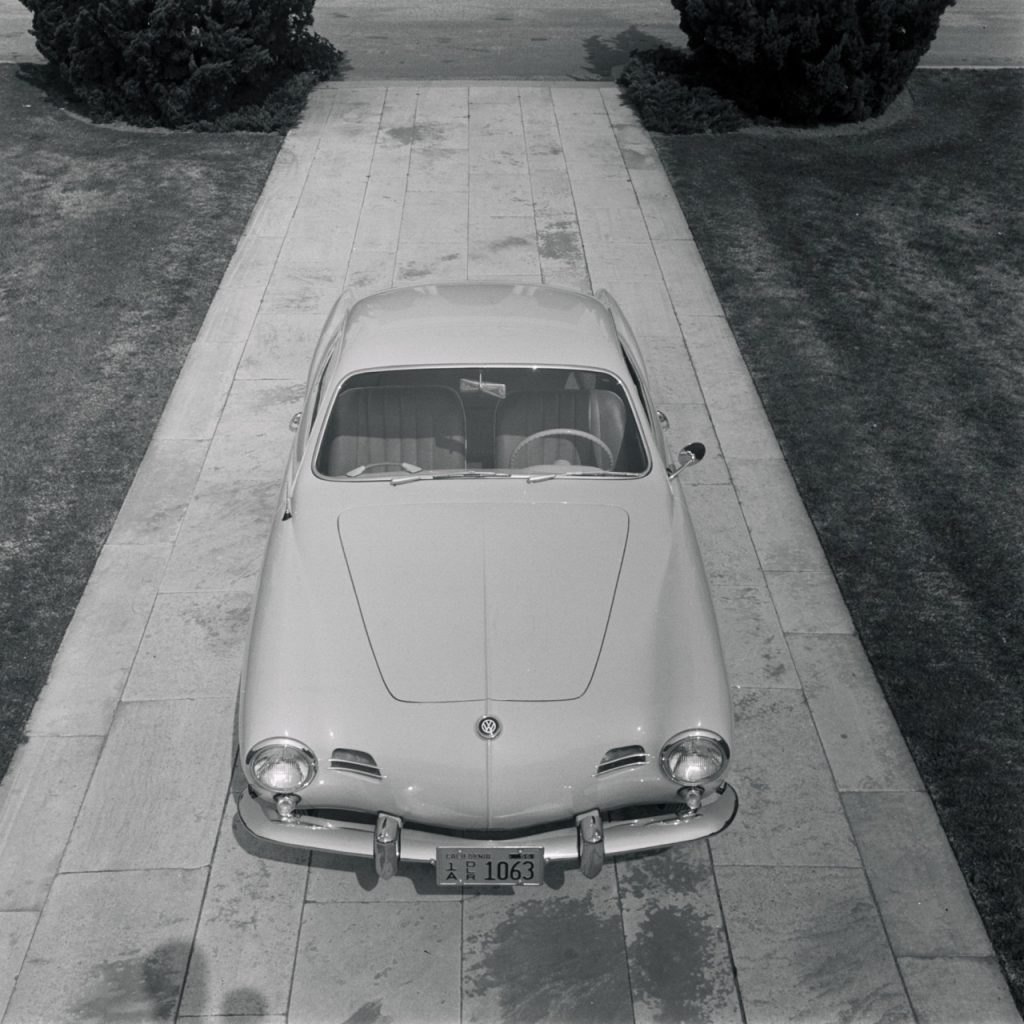
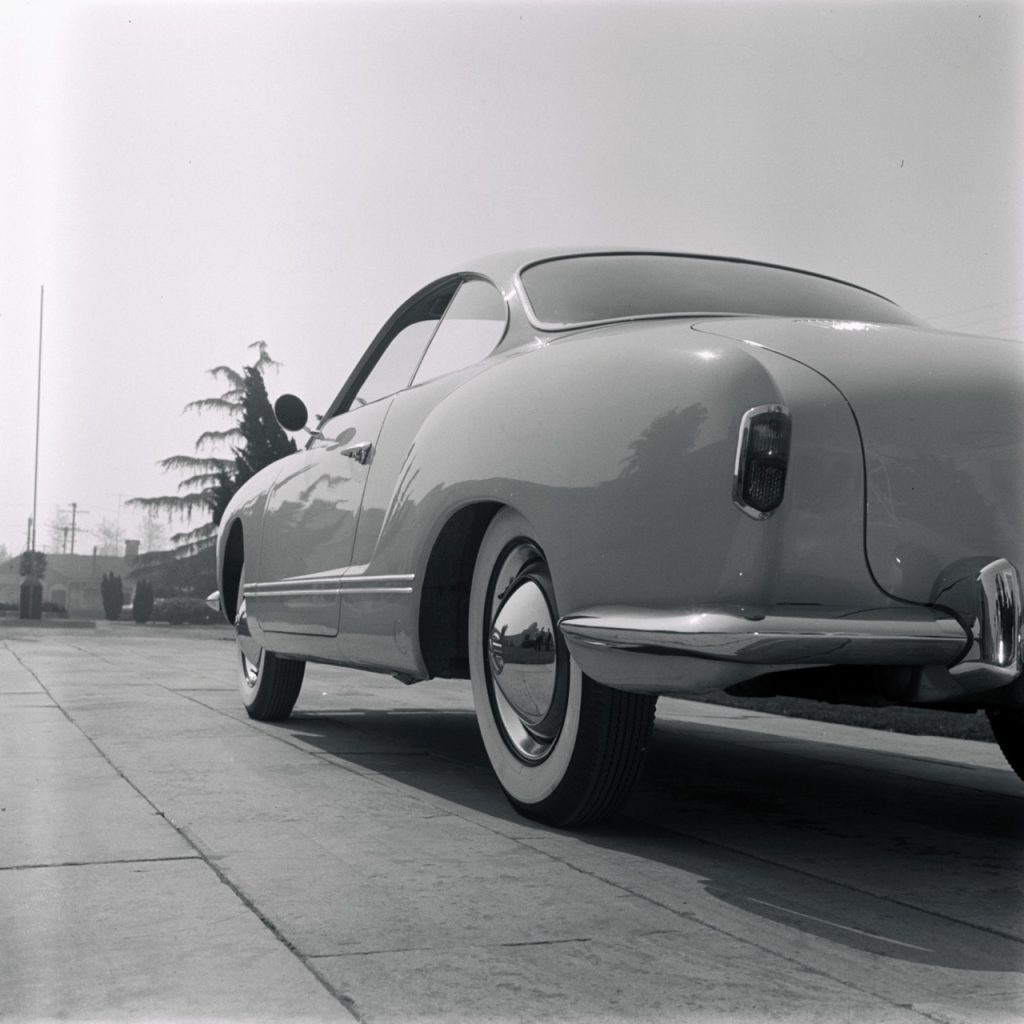
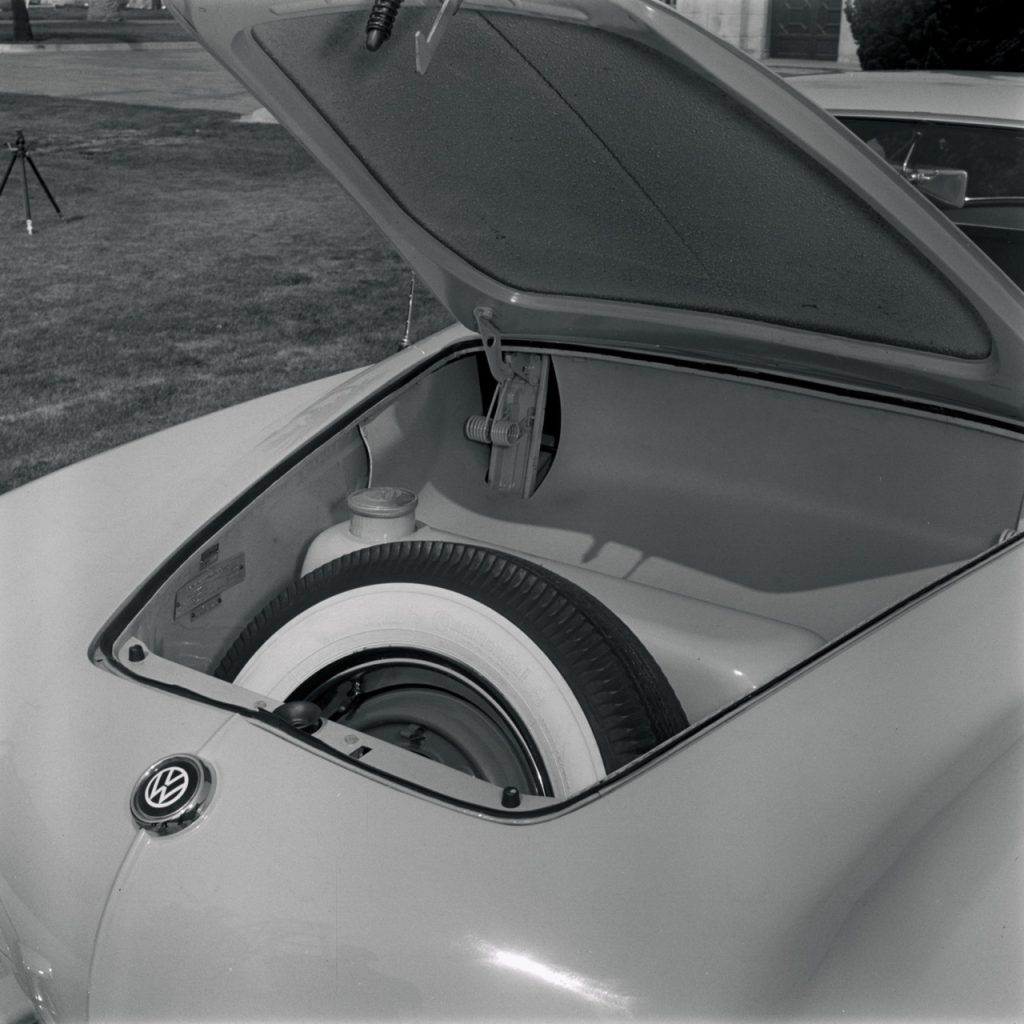
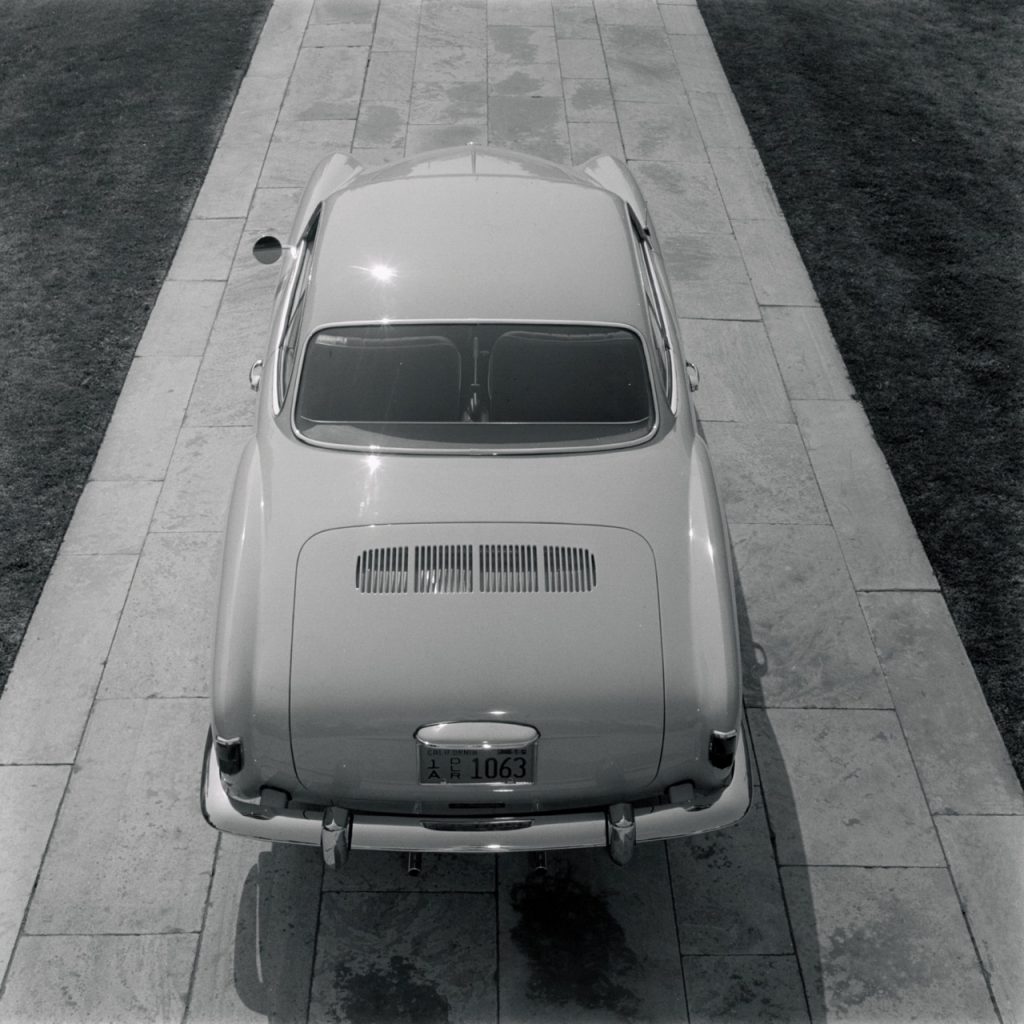
The first and most important part of any Karmann Ghia is its bodywork. Hidden rot on an outwardly shiny car can spell financial disaster, as these cars were very labour intensive to build when new. Restoring one is just as time consuming, so be patient when shopping and look out for accident damage, poor panel fit, and corrosion. The heater channels can rust unseen, while the sills are vital to the car’s structural integrity, especially on the cabriolet. Check all around inside the front boot for rot and also where the battery may have spilt acid that has stripped the paint away. Beyond that, inspect all the usual classic car rust favourites – door bottoms, A-pillars, floors, wheel arches, boot panel, and windscreen surround. Or, as one specialist said: “At least the roof doesn’t rust… much.”
If the body and structure are sound, the interior is much less of a concern, as most trim is easy to source, though cars from 1960 and 1967 had several parts unique to their year of manufacture. If you’re after a car that is correct in every detail, make sure cars from those two years have complete interiors and all their exterior brightwork and badges.
On the mechanical side, the Karmann Ghia is every bit as well-catered for as the Beetle and just as easy to restore and maintain. Play in the engine’s bottom pulley points toward an imminent engine rebuild. Also keep an eye out for more than just a puff of oil smoke when the car is started from cold; it indicates worn piston rings. Regular oil changes every 3,000 miles will greatly prolong the life of the Volkswagen flat-four engine, and the valve clearances should be checked at the same interval. If the exhaust heat exchangers are crusty, they can let fumes into the cabin, so best to replace them if they look scruffy.
The gearboxes used in the Karmann Ghia are reliable and durable. A notchy or stiff gear shift is likely down to the nylon block in the selector rod being worn and needing replacement. Sorting this is well within the scope of most home mechanics, and so is adjusting the linkage if the lever is prone to jumping out of gear when you come off the throttle.
Earlier Karmann Ghias are a little more needy when it comes to maintenance due to front suspension with kingpins that need regular greasing. Be wary of cars that have been lowered, which is a common modification. It usually involves cutting the suspension tubes and installing an adjuster, so ask to see receipts for who carried out the work to be sure it has been completed to a high standard. Altering the height of the rear suspension is much simpler and easier to return to the standard height.
Drum front brakes were fitted to the Karmann Ghia up until 1967, and they work just fine if properly set up and maintained. Disc brakes require less attention, and it’s simple to upgrade an earlier car with a disc conversion.
Which is the right Karmann Ghia for you?
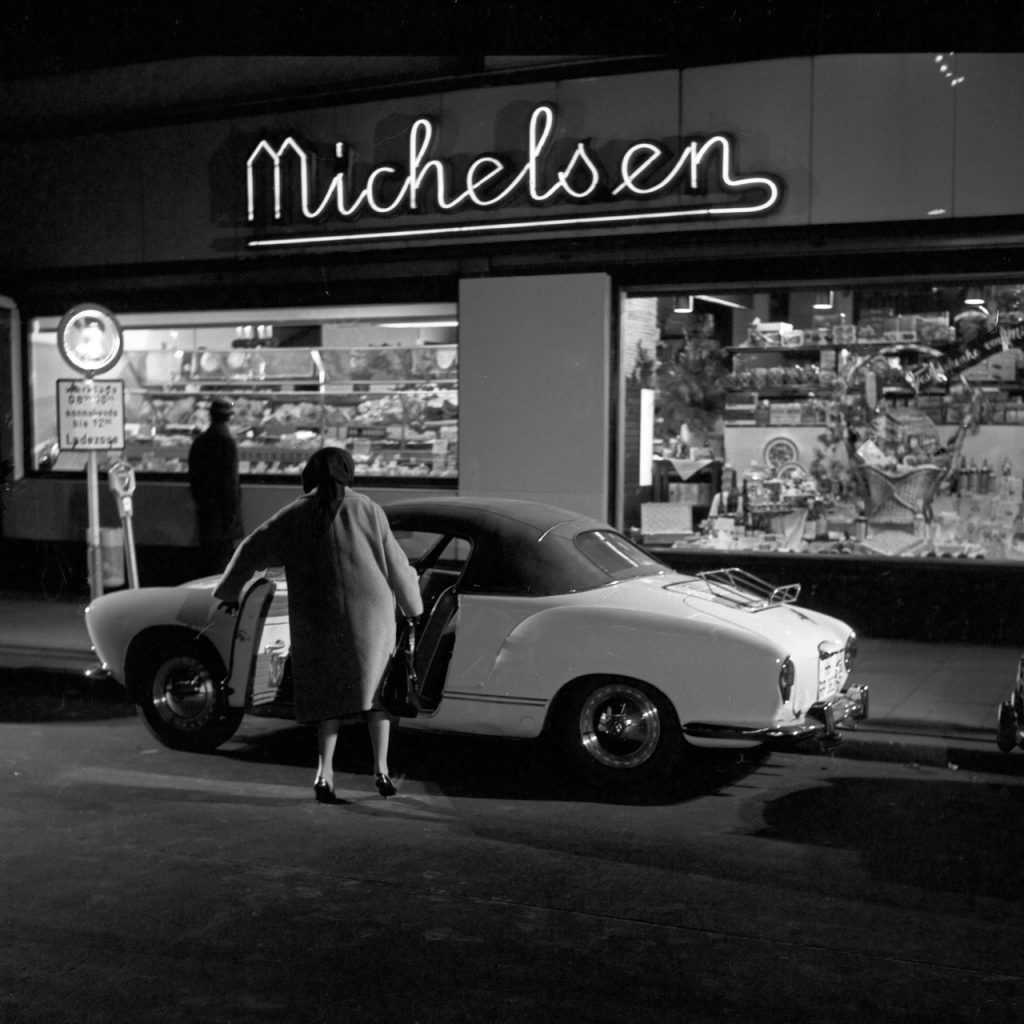
There are two big decisions to make when it comes to settling on the Karmann Ghia for you: coupe or cabriolet; and original-shape Type 14 or the razor-edged Type 34? If you’re simply looking for a chic and easy-to-use classic car, the Type 14 coupe is hard to beat in any of its guises. Purists will tend toward the earlier Lowlight models built up to 1959, but the later cars from 1967-on with front disc brakes and 12-volt electrics are the easiest to live with.
Cabriolets are as well insulated from the weather as any 1960s drop-top when the hood is in good condition. It’s a strict two-seater, though, so you don’t have the option of the small rear seats that you get with most coupe versions.
As with the purchase of any classic car, personal preference and a budget to match will always win the day. Fortunately, when it comes to the stylish Karmann Ghia, there are no losers.










Have a 1962 Karma Ghia convertible original color ruby red. Completely resorted
Thanks for the Ghia story. I feel fortunate to own my 1971 Ghia coup that I converted to into a Carrara style with modern smooth lite fender flares that are seemingly factory because of the easy look. They were welded on and a quality job with little bonds work. I also made a change to the engin compartment buy welding under the left and right side at the trunk lid a bolted together double beam then cutting a thin slice between the welded bracket that I installed…now with the removal of four bolts 2 and 2 will remove the body between the engin and bumper allowing for easy access and removal of the engin without taking pullys or other parts off to slide it back another 6 inches complete and only having to disconnect the gas line, gas peddle battery cables and the four bolts that mount the engin to the transmission.
Its then that you can bench run the motor outside of the car completely assembled for fine tuning and access to all areas then simply slide it back in and it is ready without re adjustments. It has been a great addition to the ease of engine work and upgrades. Now the last alteration I did drawer the most attention and adds an un available feel even in cars that used an aftermarket kit for the same effect that I received, I cut the target style from window to window creating a one piece easy to unlatch and relatch the removable section just above the driver and passenger seats.. What makes mine better than aftermarket glass kits to achieve this, is that I formed a kit that uses a center support 2 inches wide with center tract front to rear that acts as a perfect support and prevents any movement left to right and maintains rigidity. I then used the actual roof section made a matching kit to the body that let’s the original cut out be the target top. This car is hand worked in factory so the cut out and good fit of my kit makes for ease and factory look of this change. The window glass weather striping is functional due to the approx 22 inch depth align to the corners with the kit having a 3/4 inch overlap channeling water away from the track and thin gasket that runs left and right preventing leakage at the cuts. This change has been the best thing. Strength and looks and form and function all converge to create a nice open top or closed top. I wish the Ghia was in production today and I was allowed to modernize the vehicle with some of the changes I enjoy. A center curved console from the dash to the frame with rear view camera and several additional lights inside and out. And the pedal upgrade I have cut and welded a spacious pedal control area where all shoes are welcomed and the addition of a far left dummy pedal for an aligned rest pedal keeping your foot in the best position to stay off the clutch but ready for a slight movement to access the clutch peddle for ease of use and no wear on carpet where all drivers place their foot when cruising. Ergonomic improvements and quality changes made with steel make my Ghia a non-original restoration but rather a true factory addressed feel and in option of lucky riders, a new breed of what a 2023 Ghia would want as its form and function. Thanks for letting me get my time to share the true updates and upgrades of my special 1600 VW Karmann Ghia,
James Brooks
Augusta, Georgia
Nice! I have a 1968 cabriolet that needs some work. It was a gift to my mom from my dad when I was born. Hoping to get it running soon, my dad really wants to go for a ride in it.
Back in the 70’s I had 2 type 3 Karmann Ghia’s . I canibalised one to make the other.The Reg number was 3KUG as well! .It was white with black roof .
I am a fan of the first body style of the Ghia, in spite of the mechanical differences. It was billed as “The World’s Slowest Sports Car”, lol.